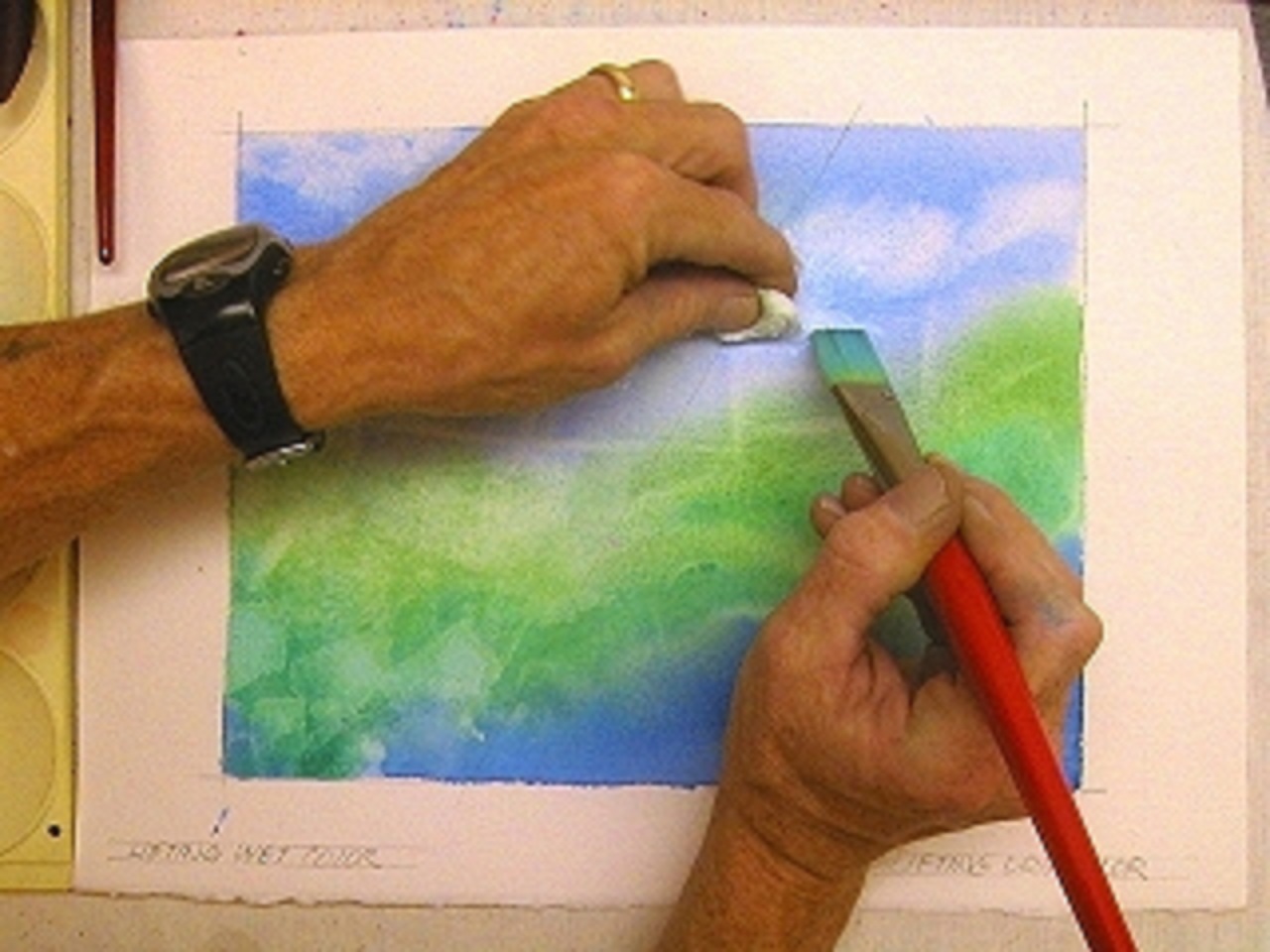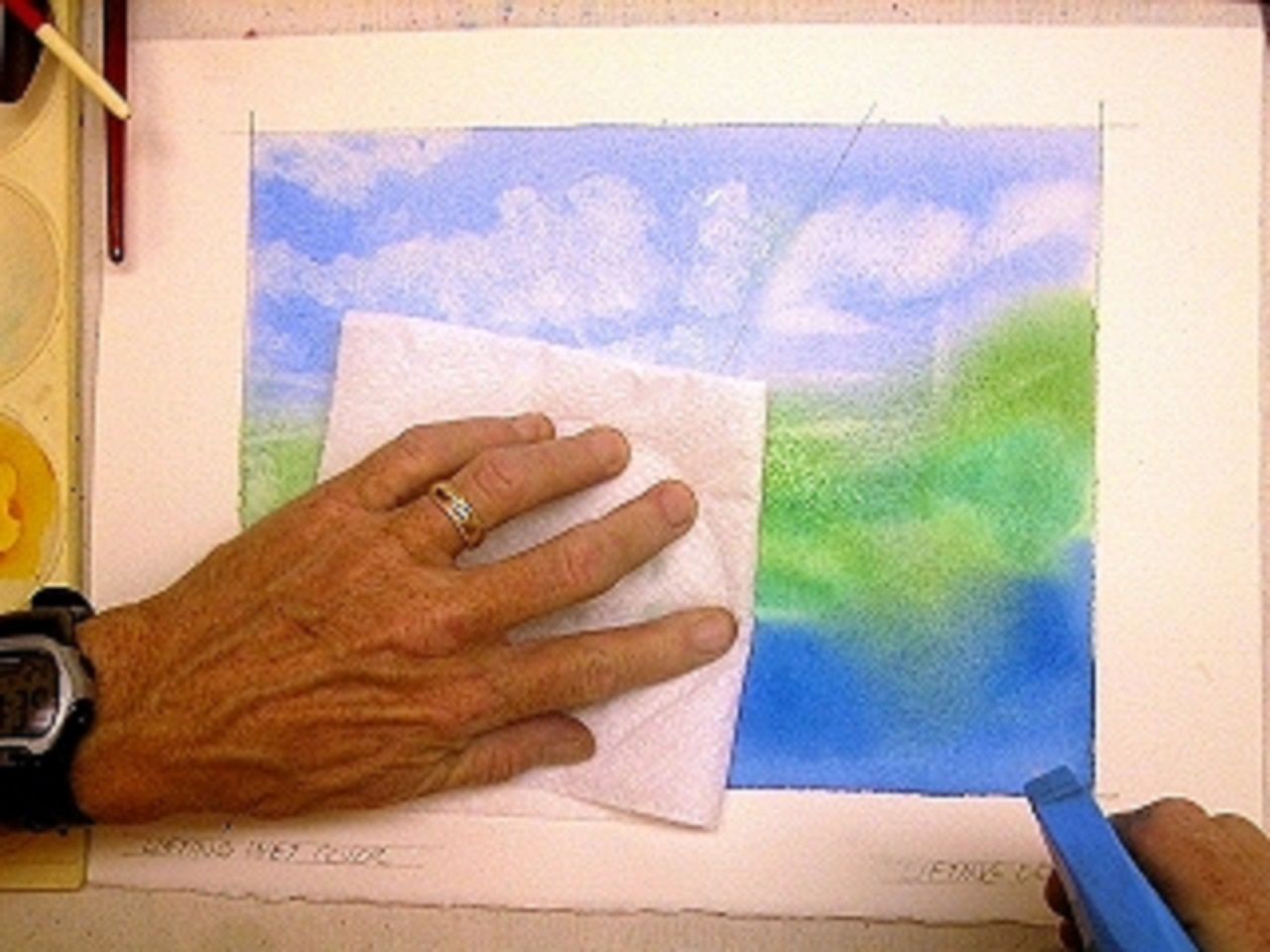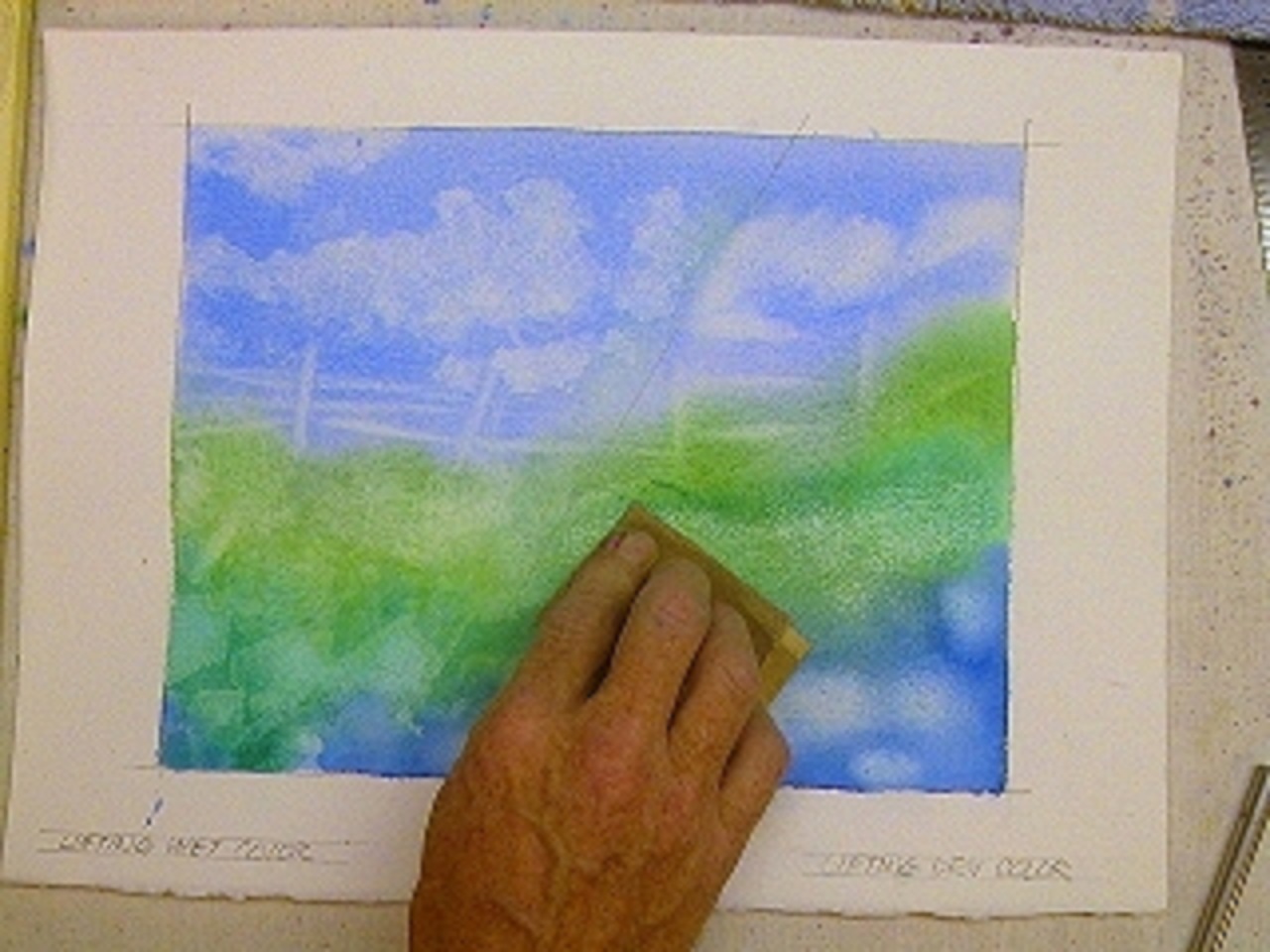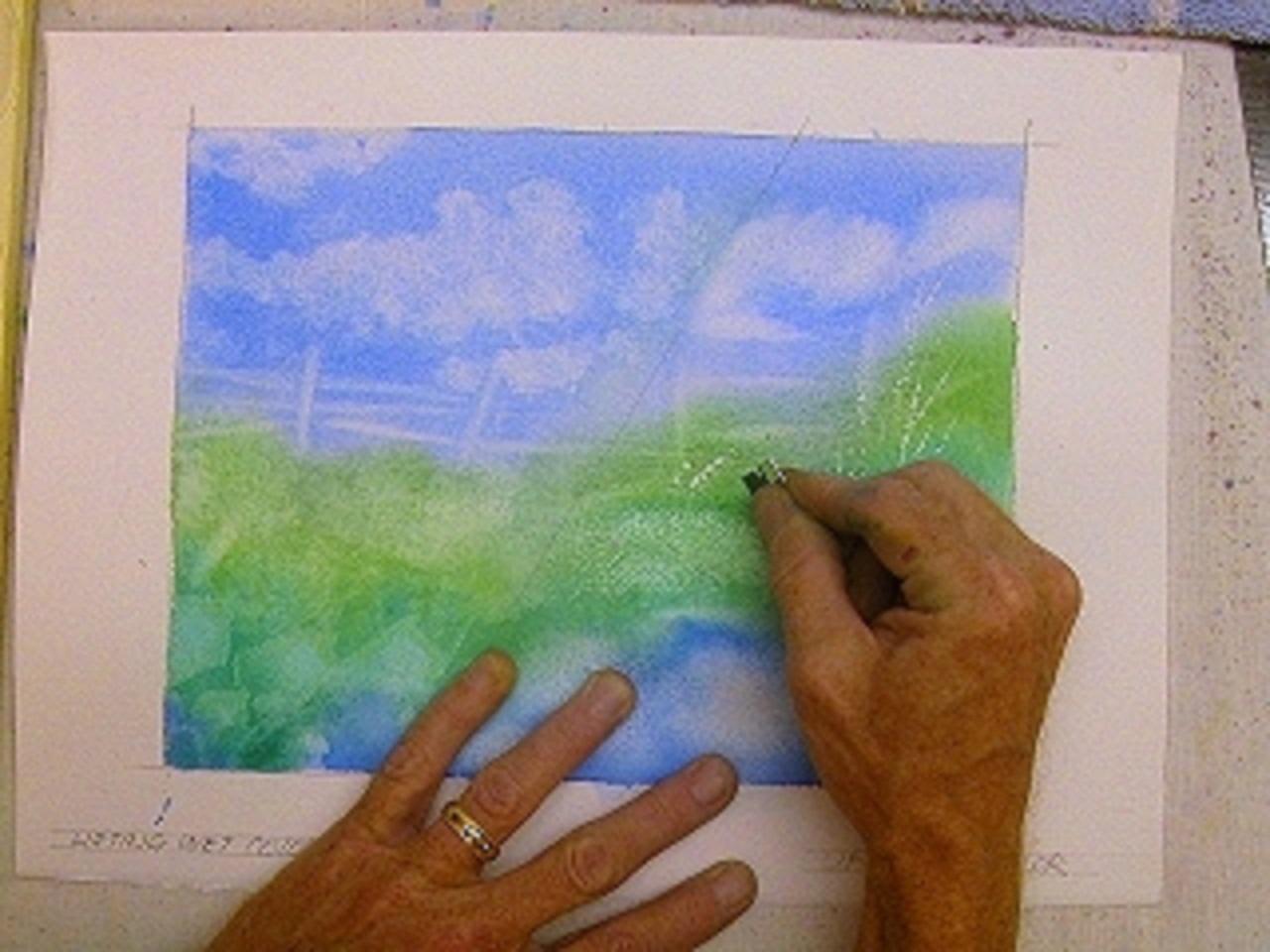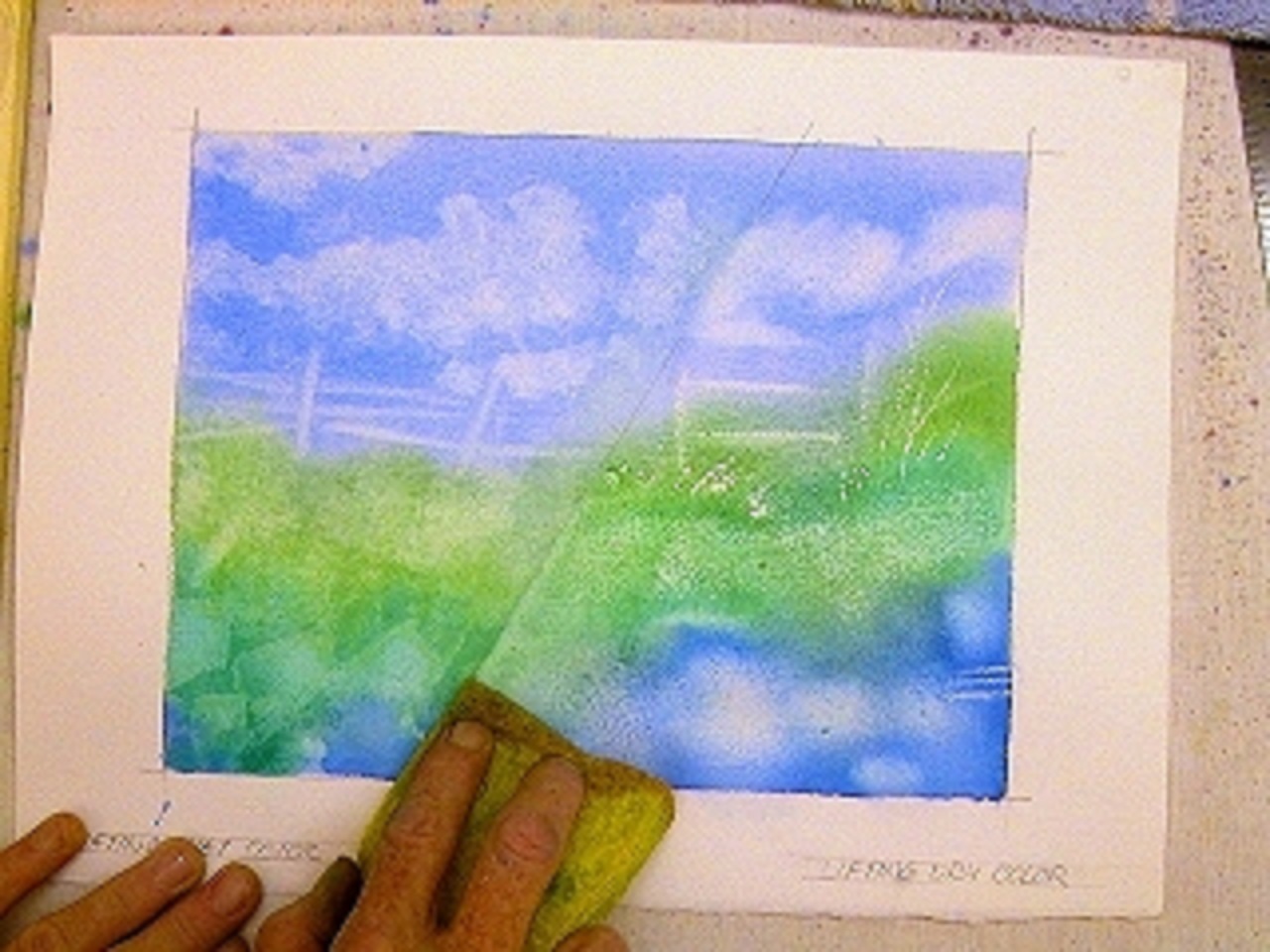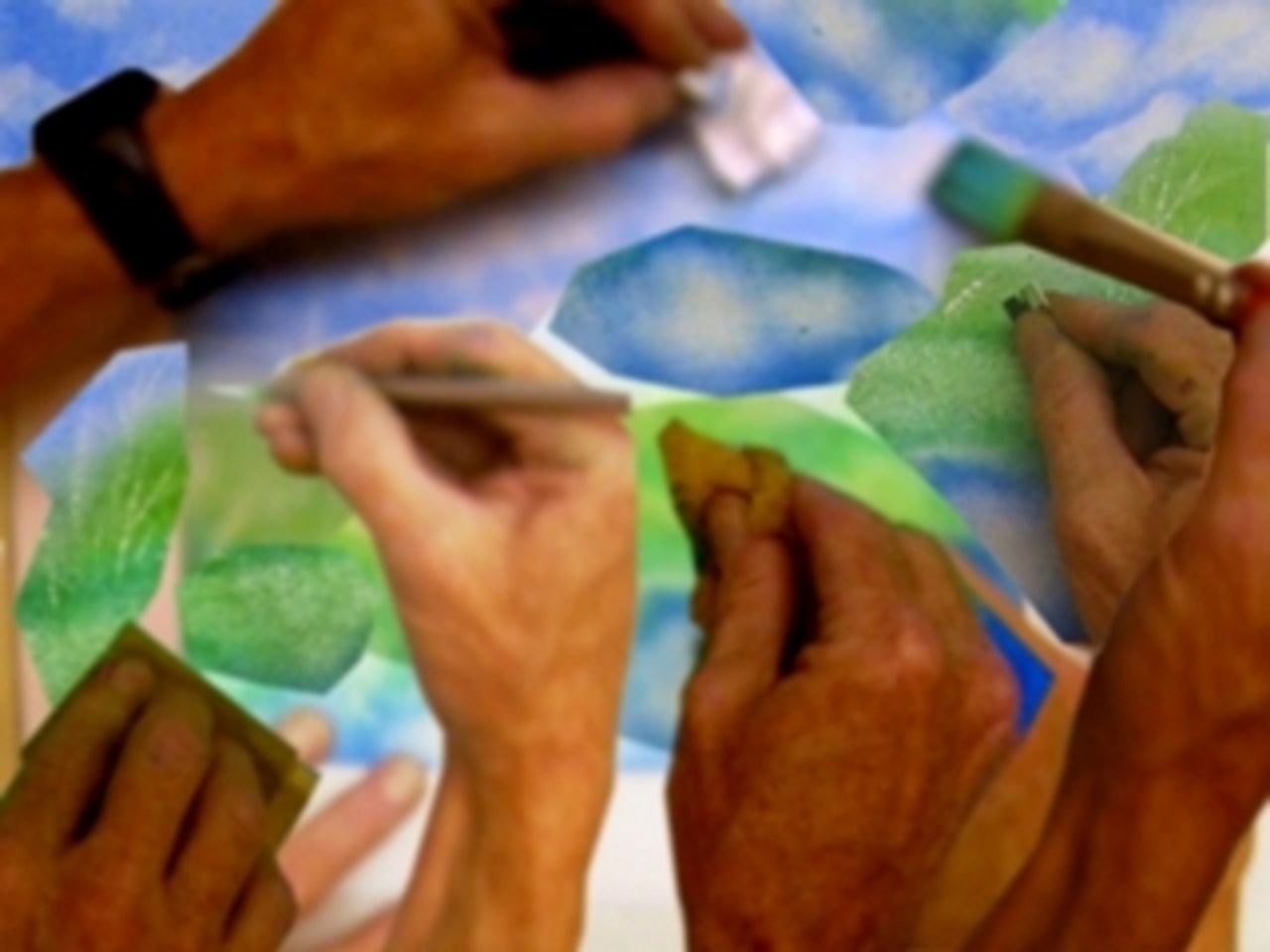This watercolor technique is not as difficult as you may imagine! Any of your regular watercolor brushes can be used to lift dry watercolor paint. Use clear water with a gentle scrubbing motion, blotting carefully with a drier brush or tissue as you go. Using red sable or other soft hair brushes creates a softer edge but is less effective at loosening the dried paint from the paper. This method offers greater control in the areas you are lightening. Using your good painting brushes for lifting paint can wear down the fine tips over time. If you've invested money in high quality brushes spend a few more bucks and keep some synthetic watercolor brushes handy for your dry color lifting needs.
Acrylic or Oil painting brushes
The tough and resilient synthetic and natural bristle brushes used in acrylic and oil painting are the more traditional choice for "scrubbing" lights into watercolor paint. The stiffer hairs can quickly scrub an area covered in paint down to the paper surface. Control is rather coarse using bristle brushes. The soft hair lift (see "watercolor brushes" above) "teases" the paint from the paper. This "scrubbing" method is more aggressive and can harm the paper if used with too much enthusiasm.
Spray and Blot
Spraying clear water on an area of yourn painting and blotting it with a paper towel can lighten large areas of a painting by degrees. Using the force of the spray in a "sandblast" manner to force pigment loose and off the paper is effective also. Across the blue wash on the bottom I proceed to blast and blot some white holes in the painting.
Sandpaper
Sandpaper is rarely used because of it's destructive nature. Tiny sharp shards of sand or other abrasives rip layer after layer of paint and paper away with each stroke. Sandpaper, when it IS used, is best used as a final touch for subtle textured highlighting. If you try to paint over a sanded area, your paint will suck into the holes of raw paper fiber like a blotter.
Razor blades, pen knifes and X-actos
Sharp things! Be careful. Take a digit count. You need to have the same amount going out as you do coming in to this section. Single-edged razor blades can pick out individual highlights and scrape rough lines. Sharp pen knifes offer a safer alternative to razor blades. The handle offers a better grip for control but make sure you don't accidentally fold the knife blade into your fingers while using. It hurts. X-acto® blades can produce finer linear highlights. Take time to find out which blade angle works best for what effect you need. All of these mothods are destructive in nature and somewhat risky due to the sharp tools used.
Sponges again, Bob
Use only natural sea sponges or cellulose (o'cello style) sponges in natural or neutral colors. They are stronger and hold more water than lightweight foam sponges. Simplest to use, use a clean damp sponge with a gentle wiping motion. Lift color from the paper, rotate to clean area on the sponge, wipe again. Repeat as needed. Here I carefully rub a large swath of color off the bottom middle section of the painting. New sponge? Rinse out new sponges thoroughly using clean water. Most are lightly sized to hold their shape before sale. Make sure your tools are clean.
Finished
Click picture to enlarge for a more detailed look at each technique's unique properties. As you can see, many techniques for removing dry paint can result in damage to your paper surface. When scraping, scrubbing, or picking out highlights with sharp or rough tools it can be easy to make a mistake that won't be easily corrected.
